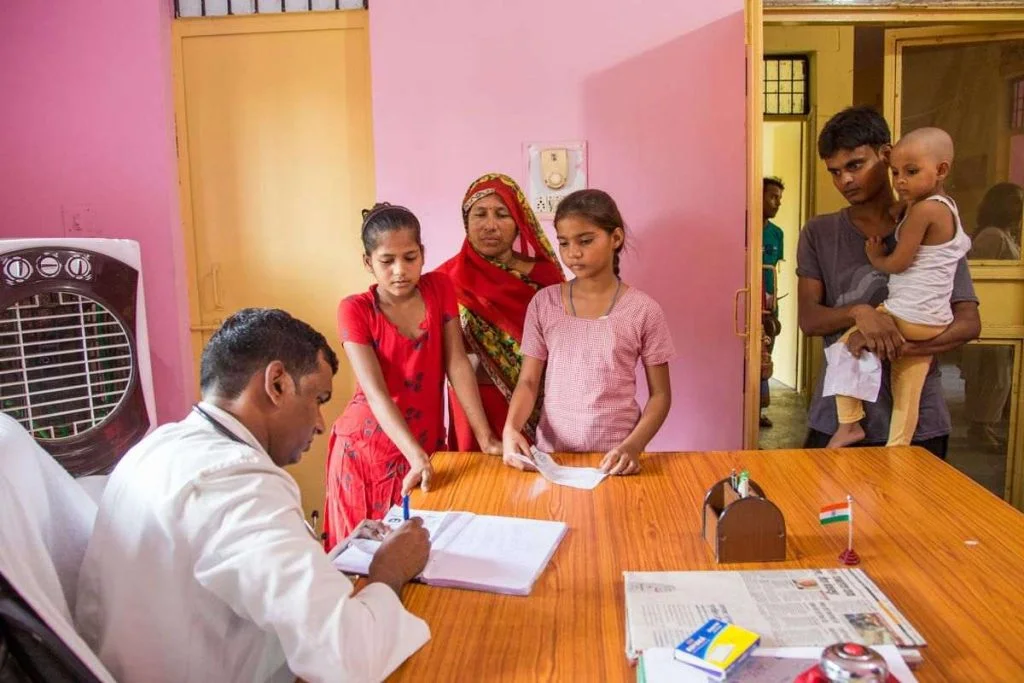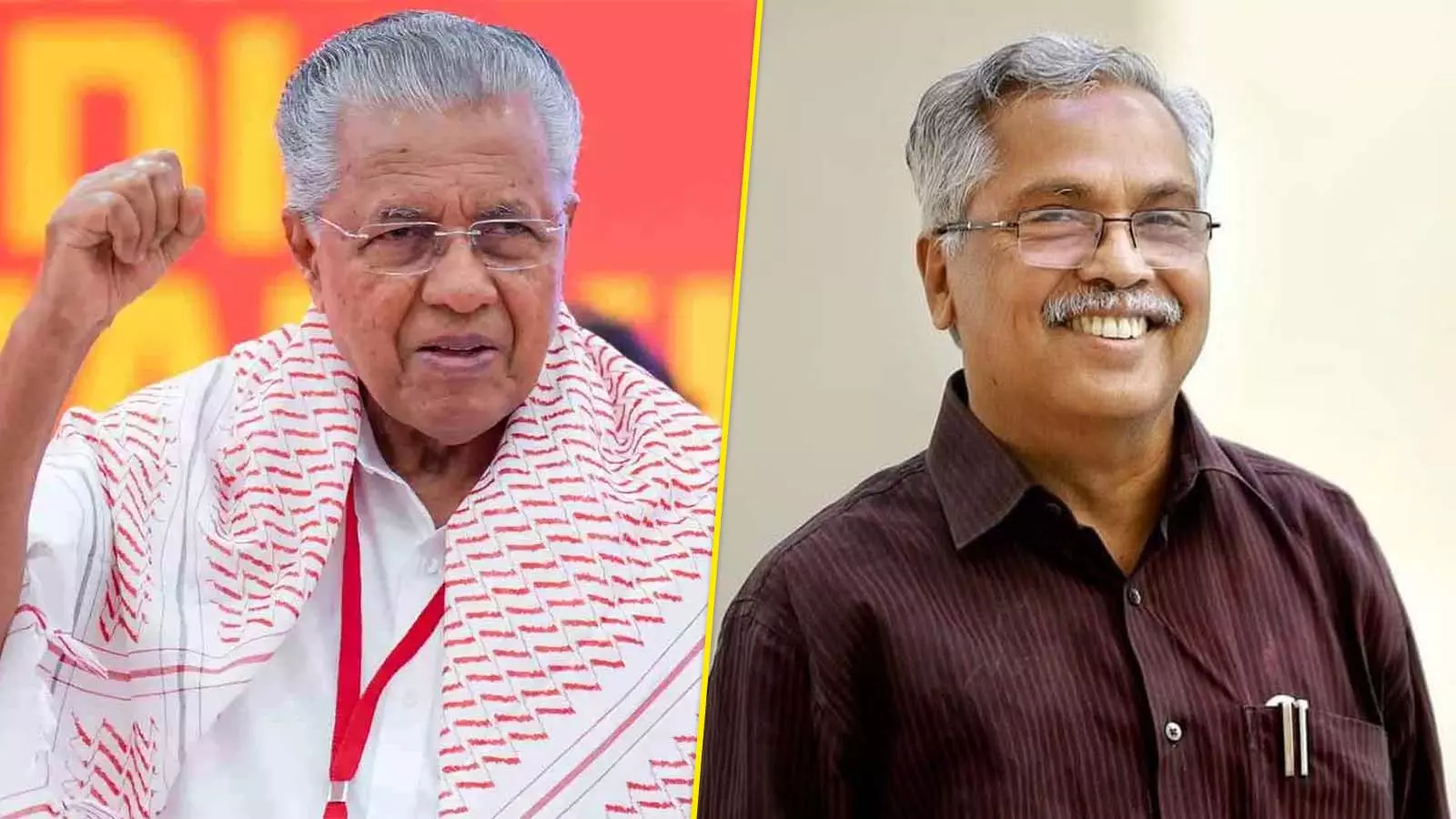Why in the News?
- Primary Health Centre (PHC) doctors form the backbone of India’s public health system, yet face increasing clinical, administrative, and emotional burdens.
- A recent analysis highlights how PHC doctors, despite being frontline leaders, are overwhelmed by workload, documentation, and systemic inefficiencies, leading to burnout.
- There is an urgent need for systemic reforms to support PHC doctors if India is to achieve Universal Health Coverage (UHC) under the Sustainable Development Goals (SDG 3.8).
| Sustainable Development Goals (SDGs) The Sustainable Development Goals are a comprehensive framework of 17 global objectives, supported by 169 targets and 304 indicators, adopted by the United Nations General Assembly under the 2030 Agenda for Sustainable Development. These goals aim to tackle a wide range of pressing global challenges, including: 1. Poverty and inequality 2. Climate change and environmental degradation 3. Peace, justice, and strong institutions The SDGs are designed to foster a world that is inclusive, equitable, and sustainable, building upon the achievements and lessons learned from the earlier Millennium Development Goals (MDGs). These 17 Sustainable Development Goals are: SDG 1 – No Poverty: All forms of poverty must be eradicated worldwide. SDG 2 – Zero Hunger: eliminate hunger, increase food security, improve nutrition, and promote sustainable agriculture. SDG 3 – Good Health and Well-Being: Ensure healthy lifestyles and promote well-being for people of all ages. SDG 4 – Quality Education: Ensure that all students receive an inclusive and equitable education, as well as opportunities for lifelong learning. SDG 5 – Gender Equality: Ensure gender equality and empower all women and girls. SDG 6 – Clean Water and Sanitation: Ensure that water and sanitation are available to everyone and managed sustainably. SDG 7 – Affordable and Clean Energy: Ensure that everyone has access to affordable, reliable, sustainable, and modern energy sources. SDG 8 – Decent Work and Economic Growth: Encourage long-term, inclusive, and sustainable economic growth, full and productive employment, and decent jobs for all. SDG 9 – Industry, Innovation, and Infrastructure: Create resilient infrastructure, encourage inclusive and sustainable industrialisation and foster innovation. SDG 10 – Reduced Inequality: Reduce inequality within and between countries. SDG 11- Sustainable Cities and Communities: Create cities and human settlements that are inclusive, safe, resilient, and sustainable. SDG 12 – Responsible Consumption and Production: Ensure your consumption and production patterns are sustainable. SDG 13 – Climate Action: Take immediate steps to combat climate change and its consequences. SDG 14 – Life Below Water: Conserve and sustainably use the oceans, seas, and marine resources to promote sustainable development. SDG 15 – Life on Land: Protect, restore, and promote the sustainable use of terrestrial ecosystems, manage forests sustainably, combat desertification, and stop biodiversity loss. SDG 16 – Peace, Justice, and Strong Institutions: Encourage peaceful and inclusive societies, ensure equal access to justice for all, and establish effective, accountable, and inclusive institutions. SDG 17 – Partnerships for the Goals: Strengthen implementation mechanisms and revitalise global partnerships for sustainable development. |
Key Highlights
- Foundational Role of PHC Doctors
- PHC doctors serve 30,000 people on average (20,000 in hilly/tribal areas; 50,000 in urban areas).
- They are not just clinicians but also planners, coordinators, and community leaders.
- Their work embodies equitable access, community participation, intersectoral coordination, and pragmatic technology use.
- Responsibilities Beyond Clinical Care
- PHC doctors coordinate immunisation drives, vector control, school health programmes, and outbreak response.
- They conduct gram sabhas, health education sessions, and mentor ASHA, ANM, and village health workers.
- They act as the bridge between national health policy and rural communities.
- Heavy Clinical Workload
- On a busy day, a PHC doctor sees 100 outpatients.
- In the absence of advanced facilities (BEmONC/CEmONC), 100 pregnant women may attend antenatal OPDs.
| 1. BEmONC (Basic Emergency Obstetric and Newborn Care) Purpose: To manage common and life-threatening complications during pregnancy, childbirth, and the postpartum period at primary healthcare facilities. Key Services: 1. Administration of parenteral antibiotics, oxytocic drugs, and anticonvulsants 2. Manual removal of placenta 3. Removal of retained products of conception 4. Assisted vaginal delivery (e.g., vacuum extraction) 5. Neonatal resuscitation: It refers to the emergency medical procedures used to assist newborns who are not breathing or have a weak heartbeat immediately after birth. 6. Basic newborn care Facility Level: Typically provided at Primary Health Centres (PHCs) or Community Health Centres (CHCs). 2. CEmONC (Comprehensive Emergency Obstetric and Newborn Care) Purpose: To provide advanced care for obstetric and neonatal emergencies, including surgical interventions and blood transfusions. Key Services: Includes all BEmONC services plus: 1. Cesarean section capability 2. Blood transfusion services 3. Management of severe complications (e.g., obstructed labor, severe hemorrhage) Facility Level: Delivered at district hospitals, medical colleges, or well-equipped CHCs. These services are vital for reducing maternal and neonatal mortality and ensuring timely, life-saving interventions. |
- PHC doctors must handle newborn care, geriatrics, mental health, chronic and infectious diseases, and even emergency trauma without specialist support.
- They must stay updated with national guidelines and treatment protocols, leaving little space for learning or research.
- Administrative Overload
- PHCs maintain 100+ physical registers covering OPD, maternal health, NCDs, drug inventory, sanitation, etc.
- Digital systems like IHIP, PHR, Ayushman Bharat Portal, HMIS, UWIN were meant to simplify, but led to duplication of work.
- Doctors often spend late evenings entering data, juggling between manual and digital records.
- The mismatch between medical duties and clerical tasks has turned doctors into data entry operators.
- Rising Burnout and Global Perspective
- The Lancet calls physician burnout a global public health crisis.
- WHO’s ICD-11 recognises burnout as an occupational phenomenon.
- Studies show nearly one-third of primary care physicians in low- and middle-income countries report burnout.
- Even in progressive states like Tamil Nadu (650 NQAS-certified PHCs), stressors remain due to checklist-driven certification.
- Need for Systemic Reforms
- International efforts like the 25 by 5 campaign (U.S.) aim to cut clinician documentation time by 75% by 2025.
- India needs automation, reduction of redundant registers, delegation of non-clinical tasks, and an empathetic system design.
- Strengthening PHCs is vital to achieve Universal Health Coverage (SDG 3.8) and ensure sustainable, humane, and resilient health care.
Key Terms
- Primary Health Centre (PHC)
- First point of contact between community and medical officer.
- Provides comprehensive care: curative, preventive, promotive, and referral services.
- Covers ~30,000 people in rural areas; ~20,000 in hilly/tribal; ~50,000 in urban.
- Essential for implementing national health programmes.
- Backbone of Universal Health Coverage (UHC) in India.
- Accredited Social Health Activist (ASHA)
- Community health volunteer under NRHM (2005).
- Acts as link between community and PHC.
- Promotes immunisation, institutional deliveries, and maternal-child health.
- Works on performance-based incentives.
- Critical for last-mile health delivery.
- National Quality Assurance Standards (NQAS)
- Framework for assessing public health facilities in India.
- Covers parameters like patient rights, clinical services, infection control, and governance.
- Certification indicates adherence to quality benchmarks.
- Criticised for being checklist-driven rather than outcome-focused.
- Meant to improve trust in public health facilities.
Implications
- Health System Strengthening
- Overburdened PHC doctors risk weakening the primary care foundation, which is essential for SDG 3 (Health for All).
- Impact on Patient Care
- Excessive workload and administrative duties reduce quality consultation time, leading to diagnostic errors and patient dissatisfaction.
- Burnout as a Public Health Challenge
- Physician burnout results in reduced efficiency, higher attrition, and emotional exhaustion, affecting the sustainability of healthcare delivery.
- Policy and Governance Gaps
- Current systems focus on compliance and checklists rather than enabling doctors to function effectively.
- Failure to reform risks policy-programme mismatch.
- Opportunity for Reform
- By streamlining documentation and ensuring supportive supervision, India can reimagine PHCs as investment hubs for universal health coverage.
Challenges and Way Forward
| Challenges | Way Forward |
| Overburdened with both clinical and administrative tasks | Delegate non-clinical duties to trained staff; introduce automation for records. |
| High patient load with limited resources | Increase staffing norms, strengthen referral linkages to higher centres. |
| Burnout and emotional exhaustion | Institutionalise mental health support and ensure adequate rest and incentives. |
| Duplication of manual and digital data entry | Integrate platforms into a single digital health record system; phase out redundant registers. |
| Checklist-driven certification (NQAS focus) | Redefine quality metrics to include doctor well-being, patient satisfaction, and sustainability. |
Conclusion
PHC doctors are the unsung champions of India’s healthcare system, delivering both clinical and public health services in challenging conditions. Yet, the crushing burden of clinical load, administrative paperwork, and emotional strain threatens to erode their effectiveness. If India truly aspires for Universal Health Coverage (UHC), investment must begin with supporting PHC doctors through empathetic reforms, automation, and systemic redesign. A resilient health system cannot be built on burnt-out shoulders.
| EnsureIAS Mains Question Q. Primary Health Centre (PHC) doctors are the backbone of India’s public health system, yet they face severe systemic burdens. Discuss the challenges faced by PHC doctors and suggest reforms to strengthen primary health care in India. (250 Words) |
| EnsureIAS Prelims Question Q. With reference to Primary Health Centres (PHCs) in India, consider the following statements: 1. A PHC typically serves around 30,000 people in rural areas, and about 20,000 in hilly or tribal regions. 2. PHCs are primarily responsible for curative services only, while preventive services are handled by higher-level facilities. 3. PHCs play a central role in implementing national health programmes such as immunisation and disease surveillance. 4. Burnout among PHC doctors has been recognised by the World Health Organization (WHO) as an occupational phenomenon. Which of the statements given above are correct? a) 1, 3 and 4 only Answer: a) 1, 3 and 4 only Explanation: Statement 1 is correct: PHCs cover ~30,000 people in rural areas, ~20,000 in hilly/tribal, ~50,000 in urban. Statement 2 is incorrect: PHCs provide both curative and preventive care (e.g., immunisation, health education, vector control). Statement 3 is correct: PHCs are frontline implementers of national health programmes. Statement 4 is correct: WHO’s ICD-11 recognises burnout as an occupational phenomenon. |
Also Read | |
| UPSC Foundation Course | UPSC Daily Current Affairs |
| UPSC Monthly Magazine | CSAT Foundation Course |
| Free MCQs for UPSC Prelims | UPSC Test Series |
| ENSURE IAS NOTES | Our Booklist |





